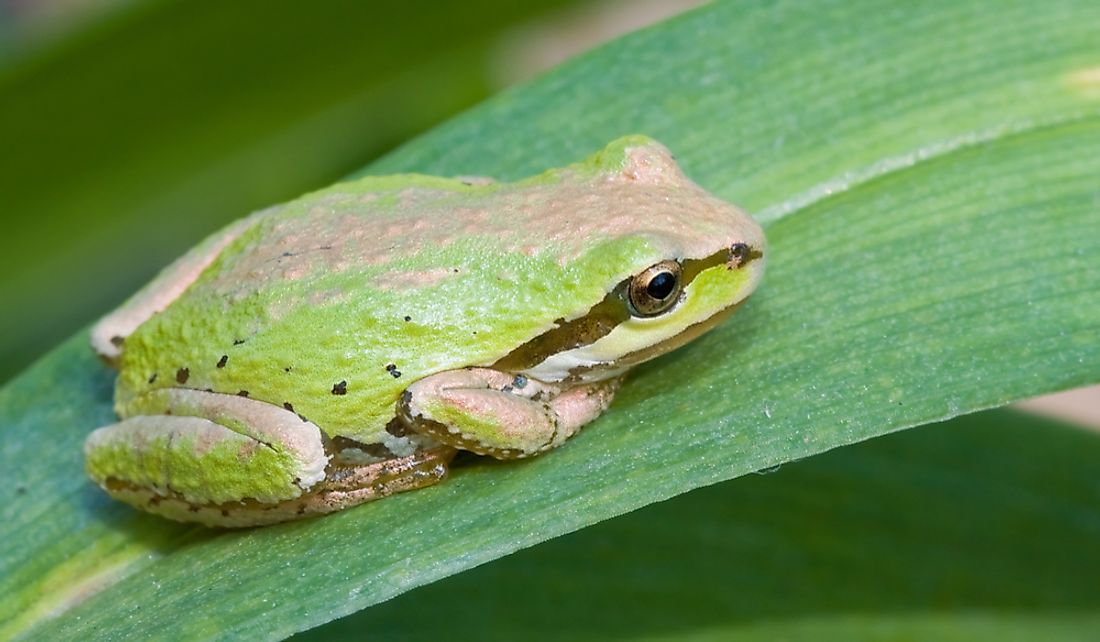What Is The Washington State Amphibian?

Washington State joined the Union in 1889 as the 42nd state. Olympia is the state’s capital while Seattle is the largest city. Washington State’s state amphibian is the Pacific Chorus Frog which is scientifically called Pseudacris regilla.
Designation of the State Amphibian
Third grade students at Boston Harbor Elementary school initiated the campaign for having an official state amphibian. Governor Christine Gregoire signed the legislation which led to the Pacific chorus frog being Washington’s state amphibian on April 2007. The law became effective from July 22, 2007. The word “amphibian” means two lives referring to the amphibians’ tendency to live on both water and land.
Physical Features
The Pacific chorus frog is about two inches long. The males are usually smaller in size than females. This frog occurs in different colors such as cream, gray, green, brown, tan, black, and reddish. However, most Pacific chorus frogs are either brown or green. They have long legs, and slightly webbed as well as long toes. The Pacific chorus frogs are slender and they have a black stripe extending from the eye to its shoulder. The skin is relatively smooth and the adults attain lengths of about 2 inches. The toes and fingers of the Pacific chorus frogs have toe-pads which assist them to move around smooth surfaces.
Behavioral Features
The Pacific Chorus frog feeds on insects. On the other hand, the frogs are preyed upon by hawks, raccoons, bullfrogs, shorebirds, and ducks. Pacific Chorus frogs may live up to 5-7 years in the wild. However, in captivity such as museums, they live about two years more than in the wild.
Reproduction
Breeding takes place in breeding ponds where males gather at the onset of warm winter rains. These males make loud calls that attract females and mating occurs. After a few weeks, the females lay 9-70 eggs which are surrounded by egg packets with diameters of about 20-40 mm. the females lay eggs in water spots that have little activity which is conducive for hatching of the eggs. The eggs hatch to tadpoles which feed on algae, pollen, and periphyton found on the water surface. After a while, the tadpoles undergo metamorphosis that turns them into little frogs.
Range and Habitat
The Pacific Chorus Frog lives in terrestrial habitats such as shrubland, oak woodland chaparral, alpine areas, grasslands, and wet as well as dry forests. These frogs inhabit any type of water for breeding purposes including wetlands, road ditches, ponds, and seasonally flooded pools puddles. The Pacific Chorus Frog inhabits every county in the state of Washington. Thus, they are a large population of frogs in Washington State. According to the IUCN Red List, they are of less concern.











